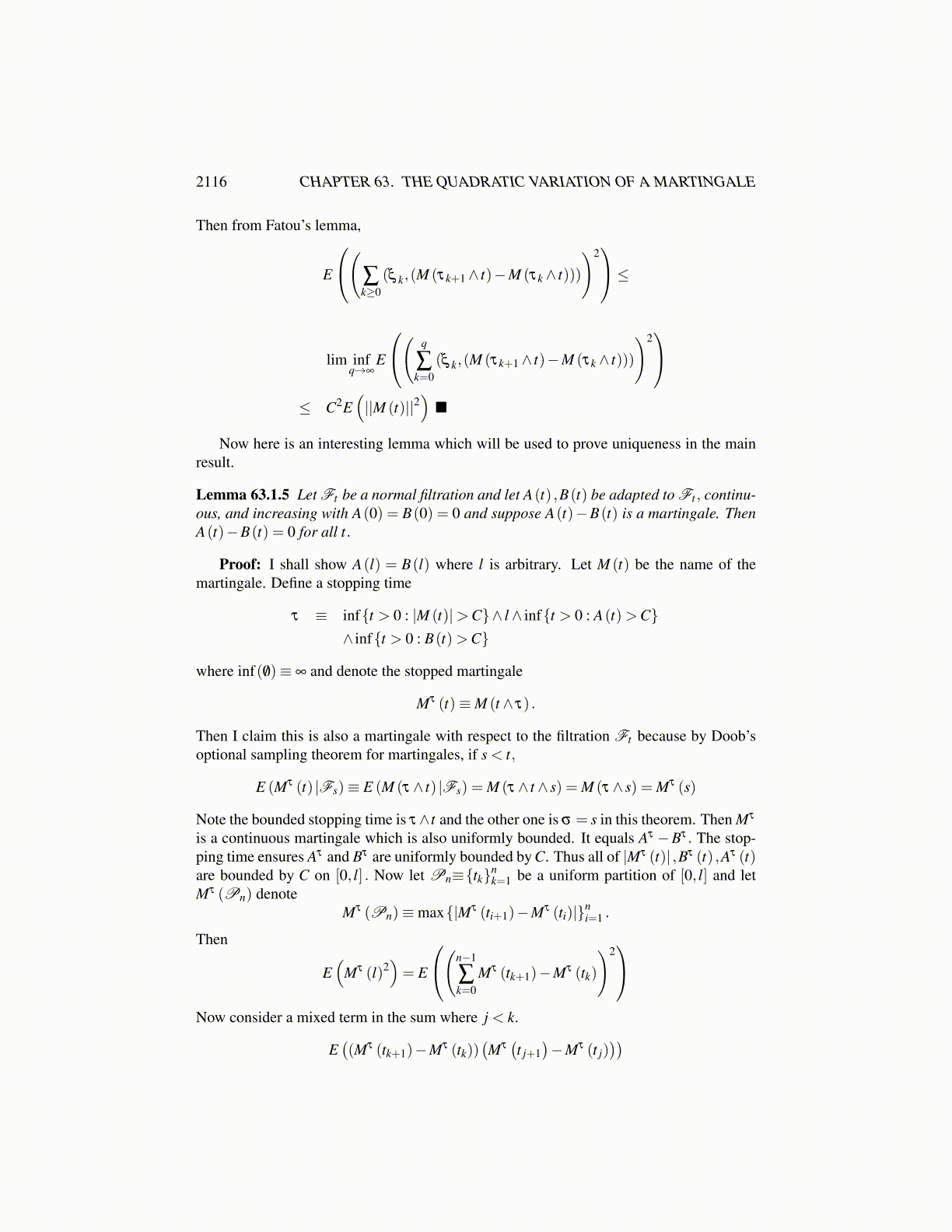
2116 CHAPTER 63. THE QUADRATIC VARIATION OF A MARTINGALE
Proof: This follows from the definitions and Theorem 61.1.1 on Page 1985.∫Ω
||E (X |G )−E (Xn|G )||dP =∫
Ω
||E (Xn−X |G )||dP
≤∫
Ω
E (||Xn−X || |G )dP
=∫
Ω
||Xn−X ||dP
Corollary 63.1.3 Let X ,Y be in L2 (Ω,F ,P;H) where H is a separable Hilbert space andlet X be G measurable where G ⊆F . Then
E ((X ,Y ) |G ) = (X ,E (Y |G )) a.e.
Proof: First let X = aXB where B ∈ G . Then for A ∈ G ,∫A
E ((aXB,Y ) |G )dP =∫
AXBE ((a,Y ) |G )dP =
∫AXB (a,Y )dP
=∫
A∩B(a,Y )dP =
(a,∫
A∩BY dP
)∫
A(aXB,E (Y |G ))dP =
∫AXB (a,E (Y |G ))dP
=
(a,∫
AXBE (Y |G )dP
)=
(a,∫
A∩BY dP
)It follows that the formula holds for X simple.
Therefore, letting Xn be a sequence of G measurable simple functions converging point-wise to X and also in L2 (Ω) ,
E ((Xn,Y ) |G ) = (Xn,E (Y |G ))
Now the desired formula holds from Lemma 63.1.2.The following is related to something called a martingale transform. It is a lot like what
will happen later with the Ito integral.
Proposition 63.1.4 Let {τk} be an increasing sequence of stopping times for the normalfiltration {Ft} such that
limk→∞
τk = ∞, τ0 = 0.
Also let ξ k be Fτk measurable with values in H, a separable Hilbert space and let M (t) bea right continuous martingale adapted to the normal filtration Ft which has the propertythat M (t) ∈ L2 (Ω;H) for all t,M (0) = 0. Then if |ξ k| ≤C,
E
(∑k≥0
(ξ k,(M (τk+1∧ t)−M (τk ∧ t)))
)2
≤C2E(||M (t)||2
)(63.1.1)